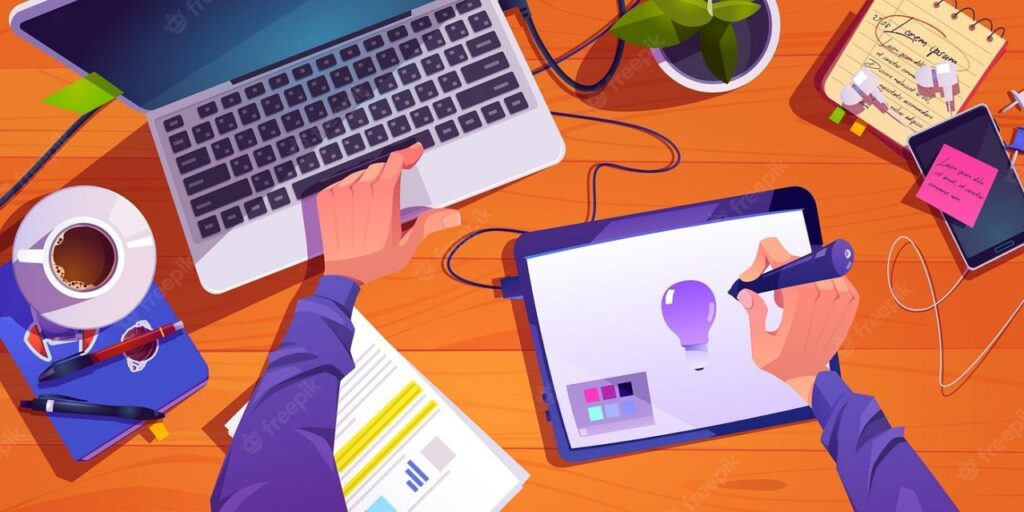Visual Programming: Enhancing Creativity in Computer Science Assignments

Introduction: The Power of Visual Learning
Visual learning is a powerful tool that leverages the brain’s ability to process information through images and spatial understanding. Visual programming harnesses this power, making coding more accessible and engaging. By using graphical elements to represent code structures, visual programming allows students to grasp complex concepts more intuitively, paving the way for creative computer science assignments.
What is Visual Programming?
Visual programming languages (VPLs) use graphical elements instead of text to create programs. These elements, such as blocks, nodes, and flowcharts, represent different programming constructs. Users can drag and drop these elements to build their programs, making the coding process more interactive and less intimidating.
Examples of Popular VPLs:
- Scratch: Developed by MIT, Scratch is a block-based VPL that allows users to create interactive stories, games, and animations. It’s particularly popular in K-12 education for introducing young learners to coding.
- Blockly: An open-source library by Google, Blockly provides a visual way to code and can be integrated into other applications. It’s often used in educational tools and games.
- App Inventor: Developed by MIT, App Inventor is a web-based VPL for creating Android apps. It’s designed to be easy to use, even for beginners.
Benefits of Visual Programming
1. Accessibility: Visual programming lowers the entry barrier for coding. Its intuitive interface makes it easier for beginners to start coding without feeling overwhelmed by syntax.
2. Enhanced Creativity: By focusing on the logic and flow of programs rather than syntax, students can explore creative problem-solving and innovative solutions. Visual programming encourages experimentation and iteration, leading to more creative computer science assignments.
3. Immediate Feedback: Many VPLs provide real-time feedback, allowing students to see the results of their code instantly. This immediate feedback loop helps reinforce learning and keeps students engaged.
4. Collaboration and Sharing: Visual programming platforms often include features for sharing projects and collaborating with others. This fosters a community of learners and provides opportunities for peer feedback and learning.
Applications in Education
Visual programming has found a wide range of applications in educational settings:
K-12 Education: Visual programming tools like Scratch are widely used in elementary and secondary schools to introduce students to coding. These tools are designed to be fun and engaging, helping to spark interest in computer science from a young age.
Higher Education: In universities, visual programming can be used to teach complex concepts such as data structures, algorithms, and artificial intelligence in a more accessible way. Tools like Snap! and Alice are popular in higher education.
Special Education: Visual programming is also beneficial in special education, where students with different learning needs can benefit from the interactive and visual nature of these tools. Platforms like Kodu Game Lab provide accessible ways for all students to learn coding.
How Visual Programming Transforms Learning
1. Encourages Active Learning: Visual programming requires active participation from students. Instead of passively reading or listening, students are directly involved in creating and manipulating code.
2. Builds Problem-Solving Skills: By constructing visual code, students develop strong problem-solving skills. They learn to break down problems, think logically, and troubleshoot errors effectively.
3. Supports Differentiated Instruction: Teachers can use visual programming to tailor lessons to the needs of individual students. Whether students are just starting out or looking to advance their skills, visual programming can provide appropriate challenges and support.
4. Prepares Students for the Future: As technology continues to evolve, the skills developed through visual programming—such as logical thinking, creativity, and collaboration—are increasingly valuable in the job market.
Conclusion: Embrace the Power of Visual Programming
Visual programming is revolutionizing the way we teach and learn coding. By making programming more accessible and engaging, it opens up new possibilities for creativity and innovation. Educators looking to enhance their teaching methods should consider incorporating visual programming into their curriculum. For additional resources and expert guidance on creating engaging and creative computer science assignments, visit ResearchHubOnline.com. Our platform offers comprehensive support to help you create assignments that inspire and challenge your students.